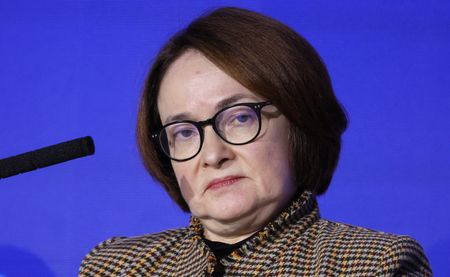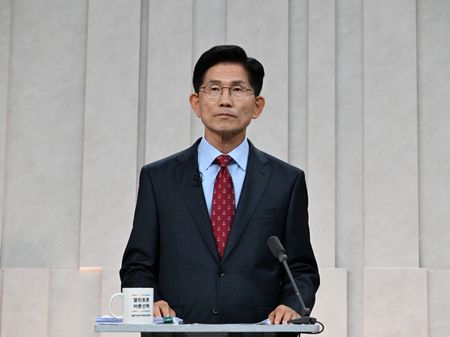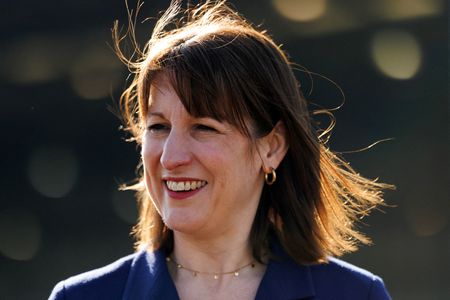MOSCOW (Reuters) -Russian Central Bank Governor Elvira Nabiullina addressed a news conference on Friday after the central bank kept its key interest rate on hold at 21%.
Nabiullina spoke in Russian. The quotes below were translated into English by Reuters.
*NABIULLINA ON THE POSSIBILITY OF A RATE CUT:
“We didn’t discuss a rate cut. We discussed two options: holding the rate and raising the rate… The interval we gave implies both the possibility of a rate cut this year and the possibility – we do not exclude it – of a rate increase. Everything will depend on how stable trends will be formed.
“In order for us to start cutting the rate, it’s not necessary for inflation to come down to 4%. What we need to make sure is that inflation slows steadily towards the target level. In other words, if we see a pronounced, sustained, not ad hoc slowing trend, which according to our forecast will bring inflation to 4%, then it will be possible (to cut the rate).
“So far, we do not see such prerequisites – we do not see these sustainable trends yet. We are watching a wide range of indicators, but the latest data that we have on lending, on savings, and on the dynamics of monetary aggregates – if they become sustainable, then a rate cut is possible.”
NABIULLINA ON POSSIBLE PEACE SETTLEMENT IN UKRAINE:
“For now, I think it’s premature to include (this factor) in the scenarios… Everything will depend on the development of the situation. I think it’s impossible to calculate the exact impact on the economy and inflation.”
NABIULLINA ON INFLATION:
“Inflation is now unacceptably high. We have raised the inflation forecast for this year…We estimate that (annualised inflation) will peak somewhere in April or May. As for current inflation, month-on-month price growth… should start to slow down soon…
“But most importantly, we expect that by the end of the year monthly inflation, which characterises just the current price pressure, will be about 4% on a year-on-year basis. But since we entered the beginning of the year with high inflation, by the end of the year annual inflation will be 7-8%.”
NABIULLINA ON CORPORATE LENDING:
“The December-January data on corporate lending is very noisy. We need more data to ensure that this is a sustained slowdown… We will keep an eye on these dynamics.”
NABIULLINA ON THE ROUBLE:
“The rouble strengthened in December. The rouble’s strengthening… is certainly a disinflationary factor, but its effect on prices has a lag. We can already see a slowdown in the prices of goods which depend on the exchange rate, primarily smartphones and household appliances…”
NABIULLINA ON THE RATE’S IMPACT ON BUSINESS, LOANS, BANKRUPTCIES
“We don’t expect a wave of bankruptcies. Yes, of course, there are highly leveraged companies for which the growth of debt servicing costs is an important factor that reduces their profits significantly.
“But for most companies, the financial situation depends primarily on the growth of costs: it may worsen if the main costs associated with raw materials, materials, labour costs continue to grow at the same rate…higher tariffs, more expensive transportation logistics, including due to sanctions. And the growth of these costs is just a direct consequence of overheated demand, the indicator of which is high inflation.
“In general, business… maintains financial stability… So far, we see an increase in restructuring requests among small- and medium-sized businesses, which is of course important. But in general, the volume of restructuring… does not exceed the level in 2023.
“…The share of so-called bad loans remains small among corporate loans… it’s 3.7%… We are monitoring it and we don’t expect any massive problems here.”
NABIULLINA ON CURRENCY SUPPLY
“So far we do not see any problems with the supply of currency on the market…As for the possibility of export revenue reduction, there may be different factors related to the development of processes in the global economy, fragmentation, trade wars, which may lead to a slowdown in the global economy and affect our demand.”
NABIULLINA ON TARIFF INDEXATION
“We understand that when costs and prices in the economy are growing at high rates for a long time, which is unfortunately the fourth year already, we need a certain indexation of tariffs for housing and communal services…It is very important to find a balance here…
“For our part, we have looked at what contribution this increased indexation of tariffs makes to inflation compared to the option if tariffs were indexed, as they were in previous years, to the target inflation rate of 4%. According to our estimates, this contribution to inflation is half a percent.”
NABIULLINA ON THE BALANCE BETWEEN ECONOMIC GROWTH AND INFLATION
“A balance between economic growth and inflation reduction can be found…our monetary policy is aimed at this very thing…We need to bring inflation back under control, because moderate price growth is the basis for long-term economic growth.
“Unfortunately, we have been a situation for a long time, when the growth of demand has overtaken and continues to overtake the ability to produce goods and services…the economy has to grow at a more balanced, more moderate pace.
“Our task is to make sure, as they say in the language of economists, that the economy lands gently and with a quick return to sustainable growth rates and low inflation.”
*NABIULLINA ON BANKS’ LIQUIDITY
“Banks have enough capital and liquidity…There was a large capital buffer before 2022…that helped get through the most acute phase of the crisis. And in 2023-24, banks increased lending faster than their capital.
“We believe that there should always be a capital reserve above this minimum level, which we regulate, so we are tightening the requirements for banks to form this reserve…By the beginning of 2025, the banking sector has already accumulated an additional capital buffer of 1.2 trillion roubles due to such macroprudential surcharges.
“As for the impact of high interest rates on banks’ capital… The capital reserve is not related to the fact that we have to adjust to high rates. But, of course, high rates mean that banks should take into account the risks of borrowers who take debts at these high rates, and there should be a sufficient capital reserve. And banks have to build up the proportion of highly liquid assets…
“Overall, we expect banks to improve their capital position and their liquidity position. This will be a very good basis for financing the economy.”
(Reporting by Reuters; Compiled by Lucy PapachristouEditing by Andrew Osborn)











